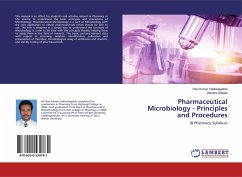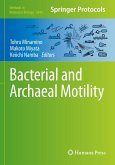The goal of my thesis project was to characterize the physiology of a Paenibacillus (LMB265) swarmer cell and to study the molecular mechanisms that govern swarming in this strain. I have shown that LMB265 displays typical characteristics of swarmer cells such as hyperflagellation, production of extracellular slime, multiple antibiotic resistance and organized cooperative behavior using microbiological approaches. Furthermore, I have identified two genes putatively involved in swarming motility using RFDD PCR. Homolgs to the Bacillus subtilis for gapA (encoding for glyceraldehyde-3-phosphate dehydrogenase) and rpoA (encoding for the alpha-subunit of RNA polymerase) were identified. These results provide an important foundation for understanding the mechanisms that control swarming motility in the LMB265 Paenibacillus strain.
Bitte wählen Sie Ihr Anliegen aus.
Rechnungen
Retourenschein anfordern
Bestellstatus
Storno








